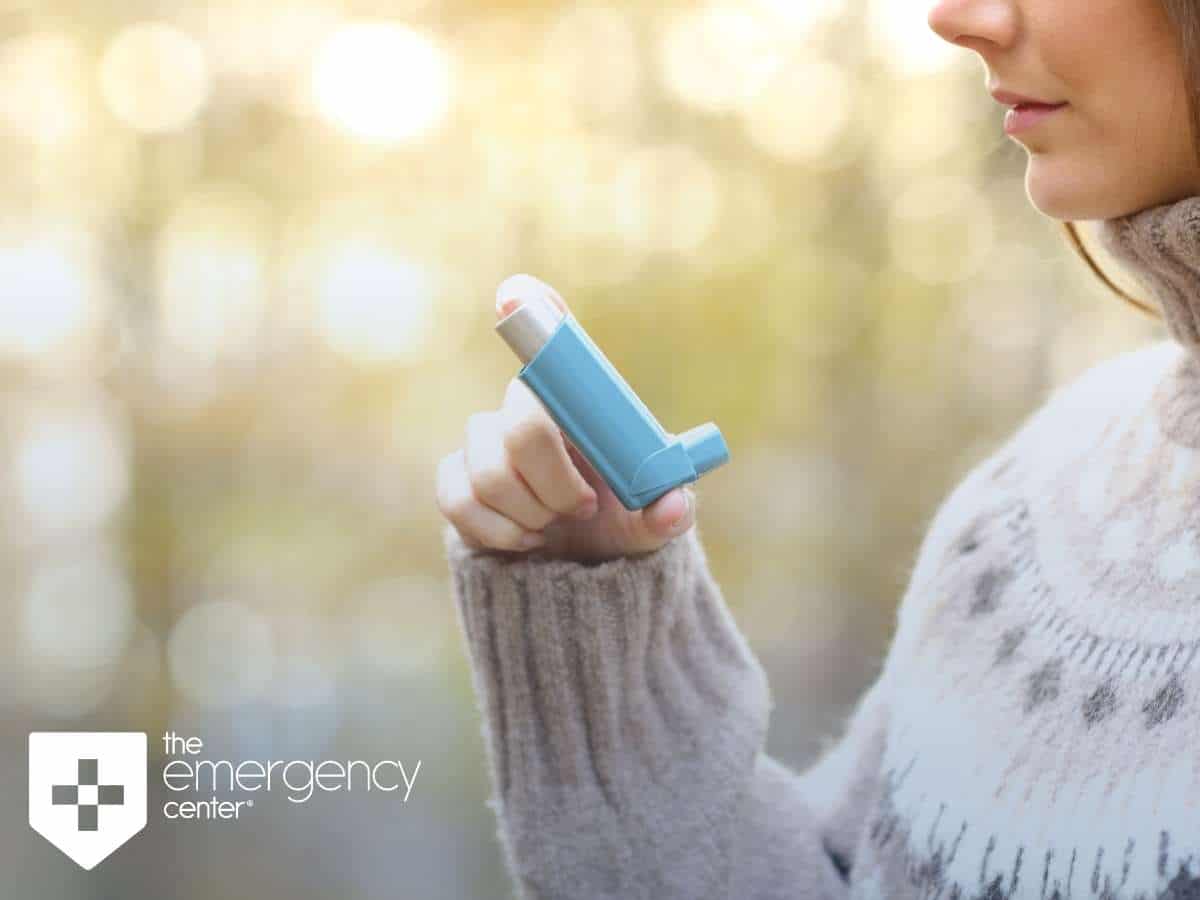Winter Asthma Attacks Treatment & Prevention
Useful Methods To Prevent & Treat Asthma Attacks
During Winter, Asthma attacks are more common. People who suffer from asthma know that winter can be an especially dangerous time of year for potential attacks and flare ups. Weather conditions during winter time have the potential to cause an increase in asthma symptoms, leaving those affected with painful breathing issues. Whether indoors or outside, it is important to know the triggers for winter asthma attacks and how to prevent them from happening.

How Does The Winter’s Weather Increase The Risk Of Asthma?
Asthma attacks can occur more often during the winter months when indoors and even more so when outside. Cold air outdoors causes mucus in the lungs to thicken, thus making it harder to catch allergens and other dangerous particles which make breathing more difficult. Mucus in the nose thickens as well, clogging nasal passages and causing congestion. Cold air also causes the lungs to release histamines that cause wheezing, which is more severe in asthma sufferers.
People might think that they have a better chance at avoiding asthma attacks if they stay indoors. While this does help keep mucus in their lungs from thickening, it also further exposes them to indoor dust, mold and other pollutants that can irritate the lungs and nasal passages. This can be avoided by maintaining a clean living environment. By frequently dusting and vacuuming, dander and other triggers can be kept to a minimum.
What Conditions Can Trigger An Asthma Attack?
Anything that can cause a person to have an asthma attack is known as a trigger. Examples of triggers include dander from pets, dust, mold and cold, dry air, and even respiratory problems. When exposed, these triggers can make it very difficult for an asthma sufferer to breathe or catch their breath. Coughing, wheezing, and chest pain are additional symptoms. In severe cases, individuals with severe asthma may also develop an upper respiratory infection.
How To Treat An Asthma Attack In The Winter
Doctors will prescribe winter asthma attack patients proper medication for handling asthma emergencies. These typically include bronchodilator asthma inhalers, which treat the symptoms of a sudden attack. The medication is inhaled and directly enters the lungs to widen tightened airways, making it easier to breathe. Once an attack occurs, it is important to loosen constricted air passages. Any other pills or medication should be taken at least a half hour prior to going outside, or as recommended by a doctor. If symptoms of an asthma attack arise when outside, go back inside and find warmth, but avoid the fireplace. The smoke emitted from burning wood is toxic and makes breathing more difficult.
Smart Prevention Tips For Bronchial Asthma
There are plenty of actions to be taken in order to prevent severe asthma attacks both indoors and outside. Having asthma doesn’t mean that every winter has to be a miserable one. By keeping warm and breathing in the cleanest air possible, suffering from an asthma attack does not have to be an annual occasion.
Preventing Asthma Outdoors
- Breathe through the nose. By breathing through the nose when outdoors, the amount of cold air entering the lungs is reduced, keeping air passages from tightening up.
- Wear layers. Wear plenty of warm layers, and be sure to include a scarf and/or ski mask. This helps keep cold air from causing congestion in the lungs.
- Take indoor breaks. Don’t become overexposed to harsh temperatures. Take an indoor fifteen minute break every now and then. While inside, warm up with a blanket and a hot beverage (tea, coffee, etc.).
- Exercise indoors. Aerobic exercise should take place indoors for those with a history of severe asthma attacks. The airways in the lungs are more constricted in colder weather, and therefore breathing is more difficult. Cardiovascular activities in winter weather increase the risk of an asthma attack.
Preventing Asthma Indoors
- AC filters. By regularly replacing AC filters, there are fewer pollutants in the air, which are breathed into the lungs and cause inflammation. Even better, purchase an air purifier too.
- Use a humidifier. Warm are can also be dry indoors, which can irritate the lungs as well. Humidifiers provide moisture in the air, and keep air passages in the lungs from drying out.
- Avoid Down. Stay away from down comforters or pillows, as they trap dander which can be breathed into the lungs. Instead, use a hypoallergenic pillow and polyester/cotton bedding.
- Smoke-free environments. Keep the home smoke/fire free. This includes cigarettes, vaping, fireplaces, candles or anything else that puts harmful gases into the air. Instead of using scented candles, asthma sufferers may consider using plug in air fresheners. Also, space heaters are great for keeping warm, only without the harmful effects of fireplace smoke.
- Dust and vacuum. Dusting and vacuuming on a regular basis helps keep dirt and dander from entering the lungs, which minimizes irritation.
- Smoking. No good ever comes from smoking! It wreaks havoc on the lungs, even for a healthy person. The impacts of cigarette smoke to the lungs of an asthmatic can be even more devastating, especially during the winter months. Chew nicotine gum or abstain from tobacco and nicotine entirely. This will greatly increase chances of avoiding a severe asthma attack this year.
Contact A Freestanding ER In Case Of An Asthma Attack
If you or a loved one feel the symptoms of an asthma attack, The Emergency Center is equipped to help you, visit The Emergency Center’s convenient 24-hour location.

The Emergency Center
San Antonio
11320 Alamo Ranch Pkwy
San Antonio, TX 78253
Phone: 210-485-3644
Conroe
4019 I-45 N,
Conroe, Texas 77304
Phone: 936-247-9457
